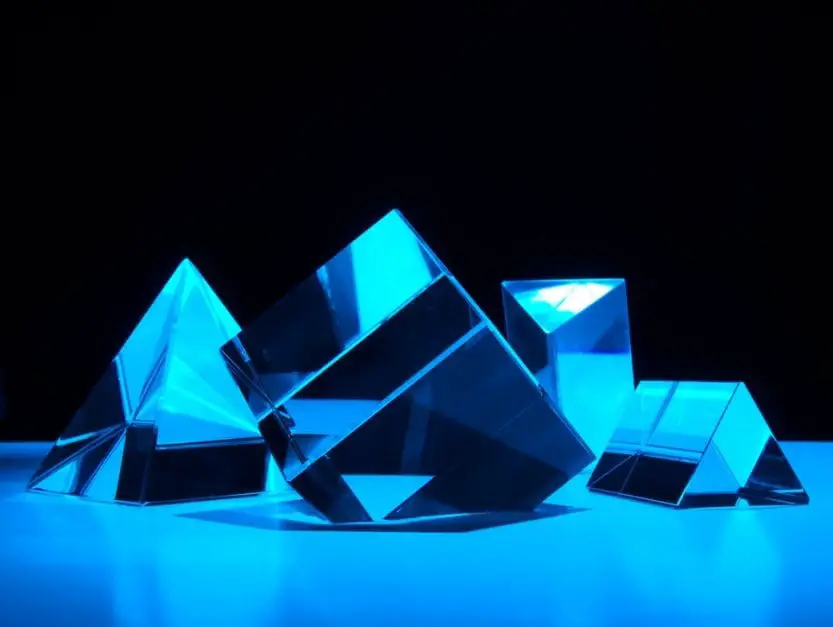A quaint fishing village in Budai, Taiwan is home to one of the most eccentric architectural designs of the century. It hosts a glass house built in the shape of a gargantuan, high-heeled, blue stiletto shoe. The dimensions of this crystal structure are impressive – the shoe is approximately 17 meters high and 11 meters long. The official name of this building is the High-Heel Wedding Church, but it is much better known as the Blue Shoe Church. Built in a little bit over two months, this architectural curiosity belongs to Chiayi Budai Seascape Park. Since its inauguration in February 2016, on the occasion of the Chinese New Year, the Blue Shoe Church has attracted many visitors. While it stays popular throughout the year, the greatest number of tourists visit the site between November and March.
Fact #1: The Blue Shoe Church is not really a church
In spite of its name, the Blue Shoe Church is not a religious object or a place of worship. It hosts no ceremonies and serves no religious function. The local government officials in Taiwan conceived it as an attractive venue for pre-wedding and wedding photoshoots. The Blue Shoe Church is also used as a wedding venue. With a capacity to accommodate 100 people, the crystal chapel welcomes couples for a romantic escapade into a world of happy ever afters.
Initially, the project included a hundred charming features such as chairs for lovers, sweets, walls decorated with maple leaves and a waiting hall in the shape of oysters. Some of these features are yet to be integrated. The complex around the Blue Shoe Church contains a giant blue-jeweled engagement ring, pumpkin-shaped stone chariots and air-balloon gondolas. There is also a large set of letters that spell LOVE, and a statue of giant headphones with the ‘Our Love Song’ tagline. Most couples make sure they do not miss the two most favored spots for taking a photo. One is the platform at the top of the shoe’s heel, and the other is the toe area inside the crystal chamber.
Fact #2: The Blue Shoe Church is made of glass – a great amount of glass
The structural foundation of the Blue Shoe Church is a steel frame, made up of 1279 rods, and it is among one of the most magnificent things that are blue. Its beautiful glittering effect of the sky-blue shoe is created by the 320 blue-tinted glass panels of varying size and shape that cover the entire building. The crystal panels are masterfully joined at special angles to create an illusion of sparkling gems scattered all over the surface, and to add glamour.
When it comes to things that are blue, the interior of the Blue Shoe Church showcases sunlight filtered through the blue glass walls, creating a magical display of geometry. The metal frame casts a mesmerizing net of triangles, kites and polyhedrons on the floor, creating a visual delight. Even though the visitors are not allowed to lay their hands anywhere on the glass, the ‘look but do not touch’ restriction does not diminish the visitor’s experience.
From the outside, seeing it shimmer in the sun or getting lavishly illuminated at night, the Blue Shoe Church visitors get seduced into an imaginary landscape, where dreams and magic become real. The crystal shoe is an obvious allusion to the story of Cinderella, a girl whose good heart and authentic beauty help her overcome poverty, cruelty and all kinds of adversity. Once her foot slips into a tiny glass shoe, she begins a life of love, abundance and everlasting happiness.
Fact #3: The Blue Shoe Church holds a Guinness Record
With its height of 17 meters, the Blue Shoe Church was officially included in the Guinness World Records as the world’s tallest shoe-shaped structure in 2016. It quickly became a popular local landmark and a ‘must-see’ tourist attraction. Many couples, young people and travel enthusiasts use it as a backdrop for selfies, group photos and attractive social media posts.
While officially certified as the world’s tallest shoe-shaped building, the Blue Shoe Church is not an entirely new concept. Across the world, there exist other footwear-inspired structures. For example, the Haines Shoe House in the USA, the Kamala Nehru Park in India and the Ohrigstad Museum in South Africa are all shoe-shaped building. None of them, however, compares in elegance, size and glitter to the Blue Shoe Church of Taiwan.
Fact #4: The Blue Shoe Church has received some criticism, too
Feminists have not welcomed the idea of building a giant, shoe-shaped “church” that targets young women and female pilgrims. Many saw this giant stiletto shoe as a form of gender objectification. It has been argued that this oversized, glitzy blue shoe endorses and re-enforces sexist stereotypes. The Blue Shoe Church has even been derided as a “church for female worshipers,” “a path to the sole,” “praise of the heel” and an attempt to profit by propagating outdated gender roles.
A critical observer could raise another question as well – the association of a shoe, as a mundane object, to the idea of a church, as a sacred space. As strange as it may seem, this strange combination has not provoked any debate. Most people prefer to see it as a symbol of a young bride, stepping into a church wearing a pair of fancy high-heeled shoes, to attend her nuptials and begin a new life.
Fact #5: The Blue Shoe Church honors a local folktale
Most visitors to the Blue Shoe Church insist that the building is not to be taken seriously. They consider it a charming, fun and joyous place to be and prefer not to overthink its ideology. However, the best response given to the critics of the Blue Shoe Church is the fact that its symbology serves a purpose much different from that of enforcing age-old gender stereotypes.
An urban tale claims that the Blue shoe church is dedicated to a local girl. Long time ago, the story goes, a young woman lost her legs to the “Blackfoot disease.” As a result, her wedding was called off. Mournful and despondent, she spent the rest of her life as a maiden, sitting in a church. Some versions of the story claim that the girl was 24 years old, and that her family name was Wang.

Fact #6: The Blue Shoe Church is a tribute to the many victims of the “Blackfoot disease”
Unfortunately, Wang’s tragic fate was not an isolated incident. The Blue Shoe Church commemorates the many women who had suffered the dreadful “Blackfoot disease,” a rare, water-borne disease that affects the blood vessels in the legs and causes gangrene. During the 1950s and the 1960s, certain regions in Taiwan experienced water shortage, leading people to consume water from artesian wells. Since the water contained high traces of arsenic, many people caught the “Blackfoot disease.” The life-saving treatment involved the amputation of both their legs. The disease afflicted many young women who, due to their disability, could never marry.
The Blue Shoe Church has been conceived as a symbol of love, with a vision to transform the sad legacy of the region into a hopeful future for its young generations. The structure stands tall in the middle of a pool of crystal-clear water. In it, there are reflections of the blue sky, of the blue glass tiles, and of the life aspirations of many young people from the region.
Fact #7: The Blue Shoe Church boosts the local economy
The Blue Shoe Church is erected amidst an economically underdeveloped region. The project has been criticized for its high cost, estimated at nearly $700,000. Another objection is that the quirky architectural structure does not fit well with its surrounding. Situated in the middle of a field, some feel that it disturbs the quiet, more traditional style of the coastal environment. Its contemporary, metal-glass composition looks incongruent against the scenery and makes an odd impression against a nearby Buddhist Temple.
However, others see the Blue Shoe Church as a smart move and a business asset. In it, they see potential and hope that this unusual local attraction will boost the local economy. Namely, for a long time, the region had stayed off the investment maps. As a result, the local population, especially the young people, struggled to find employment and lack opportunities to prosper in life. The Blue Shoe Church awakened the hope that the influx of tourists will also attract businesses to invest in the area and create more local jobs, especially in the hospitality industry. Nearby hotels and taxi drivers are among the first who have benefited from the arrival of national and international tourists. It is worth mentioning that the wedding industry is a multi-billion business in the region. It is estimated that, since 2015, the wedding photography business in China has been making an annual profit of $30 billion. The country’s wedding market is worth $130 billion a year. This is a strong argument for the proponents of the project. By capturing even a small slice of the large wedding market segment of China, the Blue Shoe Church has a lot to gain.



